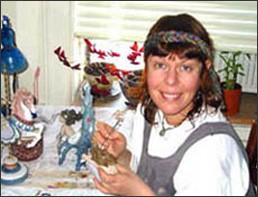Not every job is a clean, fresh break. China repair specialists often get items that are smeared with adhesives where the amateur has tried and failed to make a repair. Of all these previously mended jobs, quite the most difficult is the one where the break looks clean and neat, but when fitted together the pieces do not engage.
When the broken pieces fit together incorrectly, the edges sliding against each other without engaging, it is a strong indication that some sort of adhesive or glue has been used, of which no trace is visible. Using a loupe will probably reveal a thin film along the edges, or that the grain of the china is clogged up with a substance that hard to separate from the china paste, or that there’s small speck of cement stuck to the surface of the broken piece or in the corner of a chip. It only takes the smallest particle to upset the fit of a broken chip. So the cleaning of the edges needs to be very thorough and often takes a long time.
It is essential that before estimating the cost of repair, the restorer fit the pieces together and see if they are all there and that they fit cleanly. If there are many broken pieces, the restorer may need to strap them with an adhesive tape. But in all forms of it is advisable to make a preview, building up the parts what were broken and seeing whether they fit in place and how. It is also essential to see if there are hairline cracks, either running from the break or other parts of the china, as they have to be stopped from spreading.
When a break is so smeared with adhesive that the pieces cannot be fitted together, the item should be soaked in boiling water filled with detergent. Be sure that there are no other repair anywhere on the item that might come apart during the soaking process. Otherwise the whole item cannot be immersed in water; only the part that’s broken must be suspended in the boiling water and held there until the pieces come apart.
Boiling water removes glue and shellac. Shellac, a melted resin used for varnishing, is used often in china repair.
Since it is difficult to ascertain what form of adhesive has been used on previously mended china, the best method is to start with boiling water, and if that does not prove effective, to try other solutions or cleansers. Occasionally, a cement glue will resist all forms of “cooking”, so the only way to get it off is to scrape the edges with a knife or razor blade. It is a tedious and time-consuming process, but it’s the only way to get the cement off.
There’s one other process that needs to be mentioned, and this concerns stained china. Stained china is the type of china that has been used for many years in a cracked condition. The crack and often a break will come to the china repair expert stained dark brown. A crack in meat tray full of grease or a crack in a coffee mug etched with caffeine. Sometimes it difficult to get those stains off and make the china white again. The best remedy is to wash the item in hot water with detergent and then soak it in Parazone, which doesn’t affect the color or the glaze on China. The Parazone will remove some stains, but not all. Grease has a habit of getting into the fine grain of china where it could be visible under the lacquer or glaze. You can only do so much with stain removal. The most important thing to remember is to work on the stains gently, otherwise the stained crack may develop into a break.


Speak Your Mind